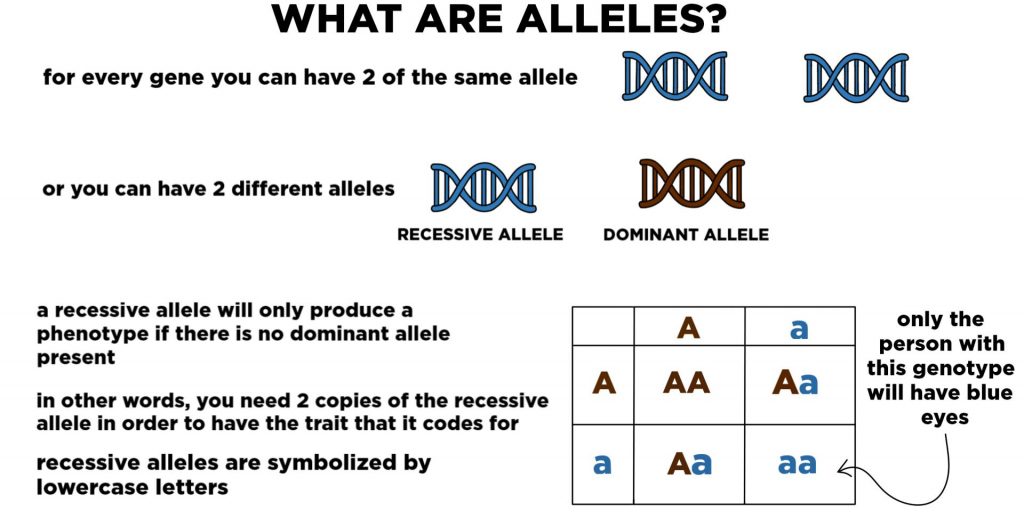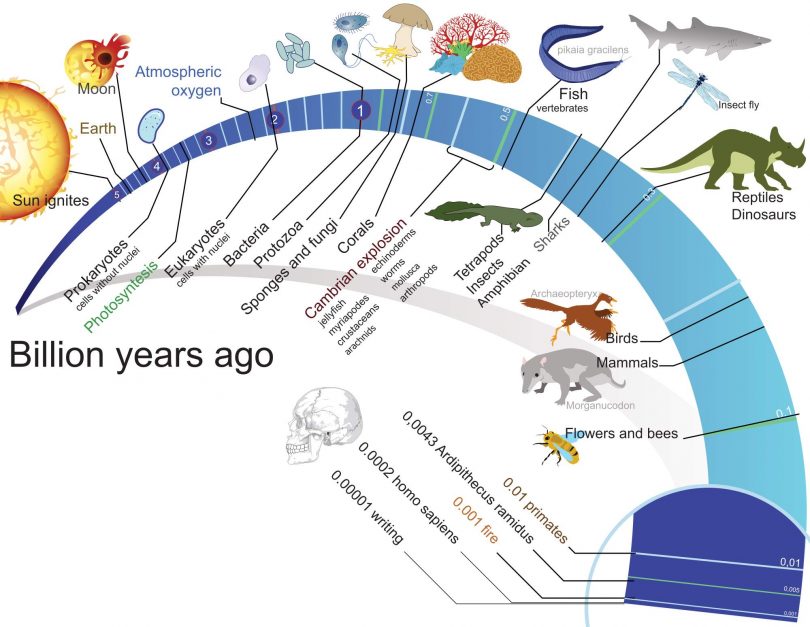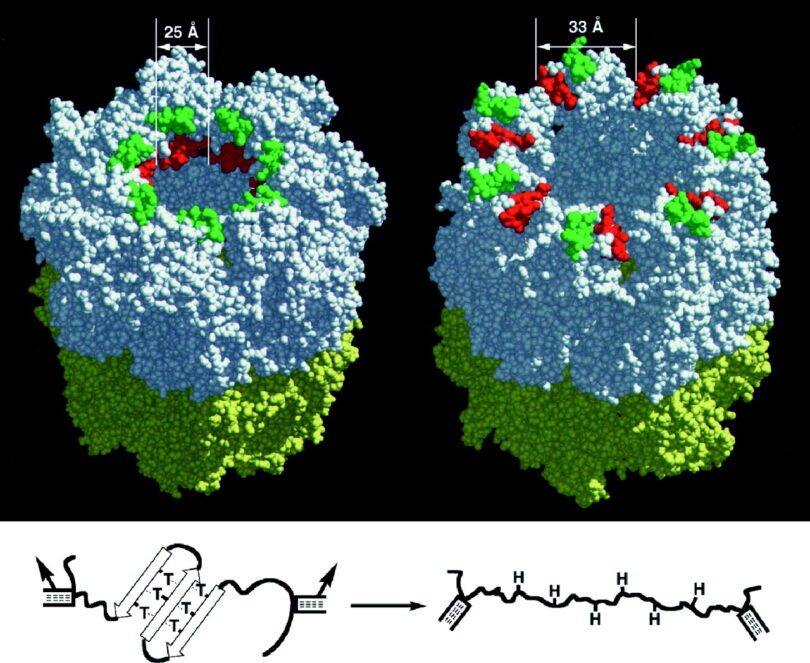Alleles limit how much change is allowed to occur where gene options are selected during the very first steps of reproduction. Such limitations are why we do not find humans with purple or orange-colored eyes that also can be passed to offspring. Most mutations that occur during life (somatic mutations) have virtually zero effect on future offspring or Alleles. Because variation is limited by Allele genetic factors, this inhibits or more accurately disallows any evolution of species. This is especially true for any large scale changes as anticipated by neo-Darwinian theory regardless of how much time is assumed for the fortuitous event to have ever unfolded. Alleles are physical genetic codes written in DNA which permit a limited number of different versions of the same gene during reproduction. Simply explained as eye, hair, or skin color but more deeply affecting literally everything within each and every living organism at the cellular level.

Alleles assemble hereditary traits from the sex cells of the parents at the formation of the zygote when the very first and original strand of DNA is woven together (the union of the male and female gametes) in the offspring before the first cell division.
Therefore, many geneticists have proposed that a more precise definition of evolution (transmutation) should be phrased today as “a change in Allele frequencies in a population over time”.
https://www.khanacademy.org/science/ap-biology/natural-selection/hardy-weinberg-equilibrium/a/hardy-weinberg-mechanisms-of-evolution
The production of a new Allele (by means of a genetic mutation carried by a parent through a somatic mutation) cannot possibly lead to evolution unless it is (1) accurately inherited by the next generation as an Allele, and (2) is able to spread through the population due to improved fitness. If the offspring do not inherit a precise copy of the new Allele, survive, and reproduce then no evolution (transmutation) can occur.
How accurate is the formation of Alleles? Incredibly accurate! The amino acid order of each protein must be precise enough to the original genetic information (99.999999%) as to ensure the survival of the organism, yet, for neo-Darwinian Theory to persist, it also must also “gain” a tiny degree of mutational error which becomes the mechanism and driving force behind transmutation evolution. That is only those gained mutations that are also passed as a “new” Allele as to affect future generations. Such protein mutations affect the Alleles and then are passed to offspring. However, in the rare and few cases, such mutations are discovered, they are found to always be genetically destructive, causing degradative diseases, cancers, sicknesses, and even death to the offspring.
Studies have revealed that such mathematical likelihoods (of “beneficial” mutations) occur so rarely and so often associated with damage, it doesn’t matter how much time we apply or how many trials are granted this simply would not reasonably ever occur, even if the earth where hundreds of billions of years old (giving us more seconds of time then molecules in the universe) and in light of many exceedingly fortuitous unlikelihood’s occurring, this has never happened. Ask an evolutionist to list beneficial mutations that increased fitness in an organism without a corresponding genetic degradative cost— they will say there are many but there are NONE. Why?
Simply because that is not how living things replicate. Large and fast mutations destroy and, as it turns out, so do exceedingly tiny ones over long periods of time. Perhaps this is due to a reality where living things do not only seem to be designed with purpose but actually were designed. Designed by intelligence to reproduce as controlled and limited by a marvelous built-in DNA Allele function. Random chance and genetic errors simply cannot provide the engine envisioned by evolutionists.
Evidence reveals that Alleles themselves physically limit mutations that pass to offspring because such errors are genetically detrimental. Again, this is because of any change in genetics sufficient to create new Alleles that might allow modifications of amino acid sequences cannot and do not drive fitness benefits without a massive degradative corresponding genetic cost.
The science is clear well beyond any reasonable doubt, a change of species or transmutation does not ever occur. Yet, the neo-Darwinian true believers latch onto the 0.000001% chance over an observable 99.999999% (or greater) chance they are wrong. Ask yourself, which position seems more “belief” based to you?


